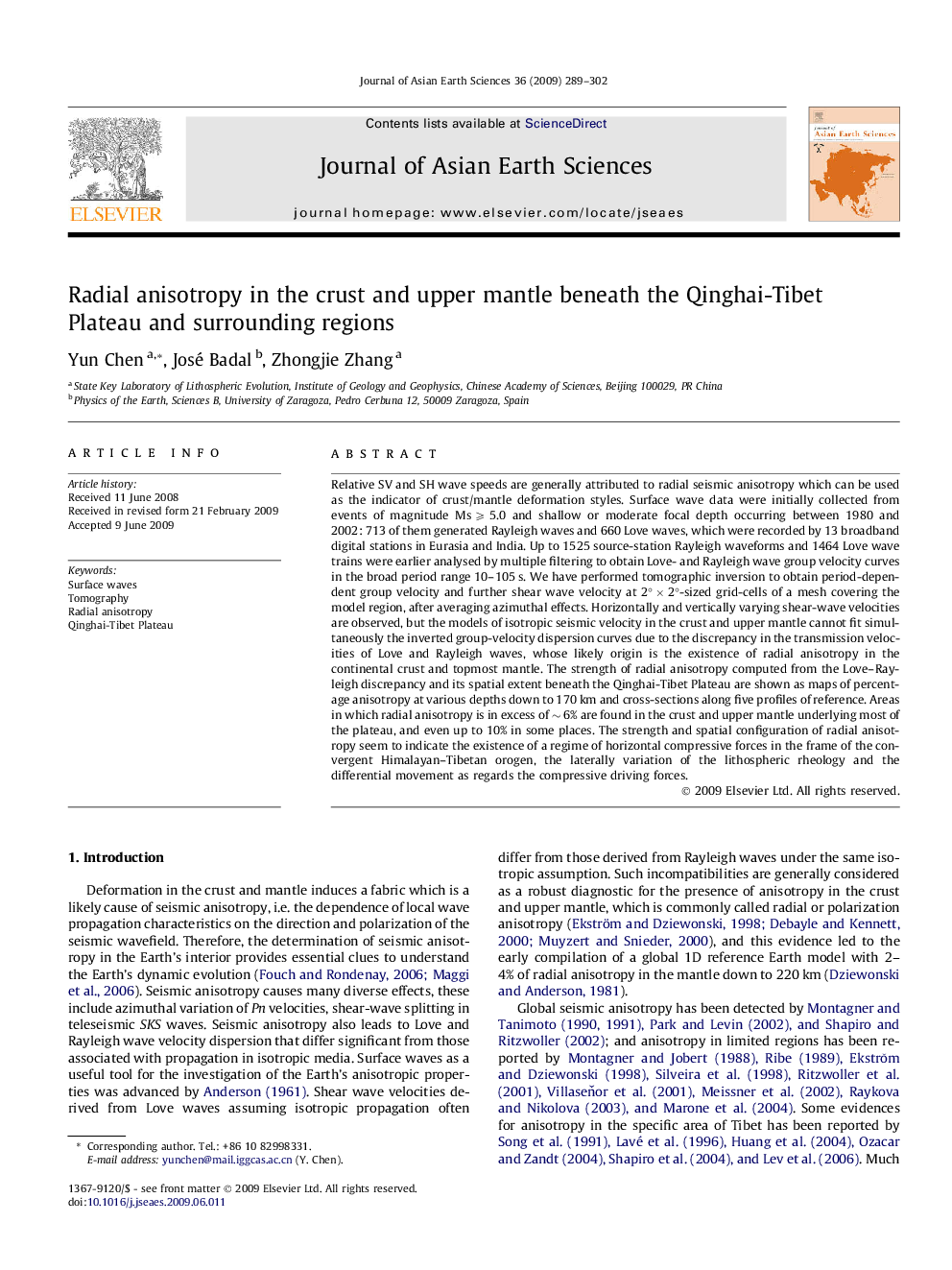| کد مقاله | کد نشریه | سال انتشار | مقاله انگلیسی | نسخه تمام متن |
|---|---|---|---|---|
| 4732310 | 1640428 | 2009 | 14 صفحه PDF | دانلود رایگان |

Relative SV and SH wave speeds are generally attributed to radial seismic anisotropy which can be used as the indicator of crust/mantle deformation styles. Surface wave data were initially collected from events of magnitude Ms ⩾ 5.0 and shallow or moderate focal depth occurring between 1980 and 2002: 713 of them generated Rayleigh waves and 660 Love waves, which were recorded by 13 broadband digital stations in Eurasia and India. Up to 1525 source-station Rayleigh waveforms and 1464 Love wave trains were earlier analysed by multiple filtering to obtain Love- and Rayleigh wave group velocity curves in the broad period range 10–105 s. We have performed tomographic inversion to obtain period-dependent group velocity and further shear wave velocity at 2° × 2°-sized grid-cells of a mesh covering the model region, after averaging azimuthal effects. Horizontally and vertically varying shear-wave velocities are observed, but the models of isotropic seismic velocity in the crust and upper mantle cannot fit simultaneously the inverted group-velocity dispersion curves due to the discrepancy in the transmission velocities of Love and Rayleigh waves, whose likely origin is the existence of radial anisotropy in the continental crust and topmost mantle. The strength of radial anisotropy computed from the Love–Rayleigh discrepancy and its spatial extent beneath the Qinghai-Tibet Plateau are shown as maps of percentage anisotropy at various depths down to 170 km and cross-sections along five profiles of reference. Areas in which radial anisotropy is in excess of ∼ 6% are found in the crust and upper mantle underlying most of the plateau, and even up to 10% in some places. The strength and spatial configuration of radial anisotropy seem to indicate the existence of a regime of horizontal compressive forces in the frame of the convergent Himalayan–Tibetan orogen, the laterally variation of the lithospheric rheology and the differential movement as regards the compressive driving forces.
Journal: Journal of Asian Earth Sciences - Volume 36, Issues 4–5, 18 October 2009, Pages 289–302